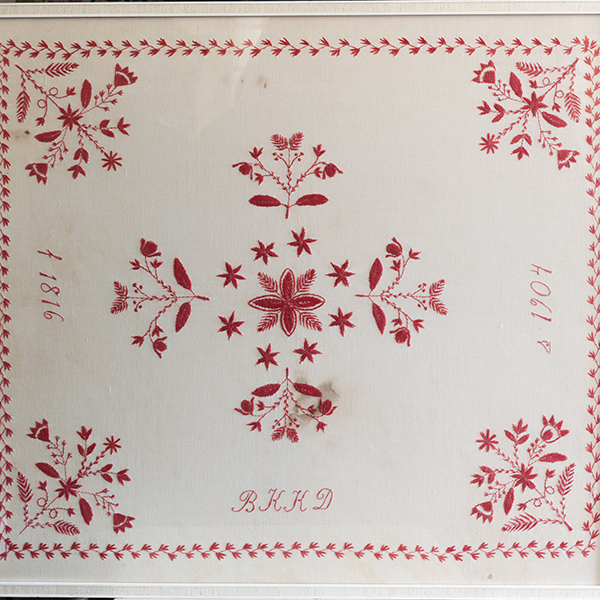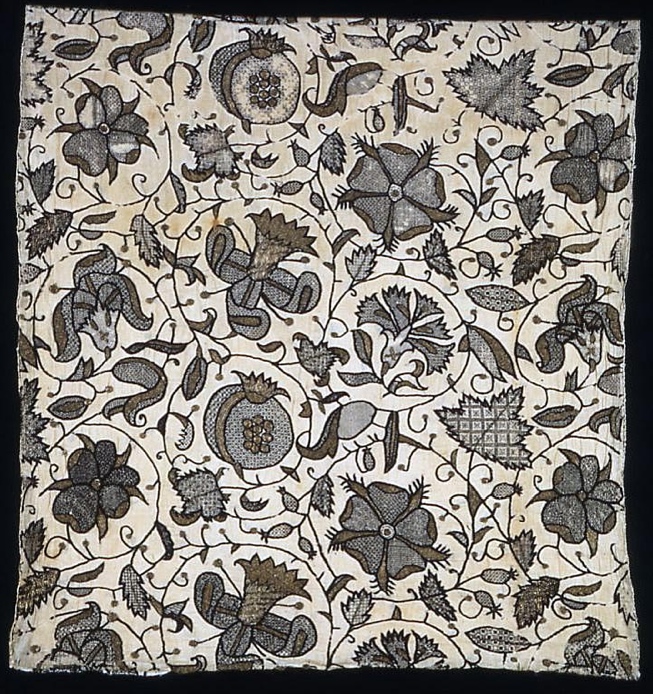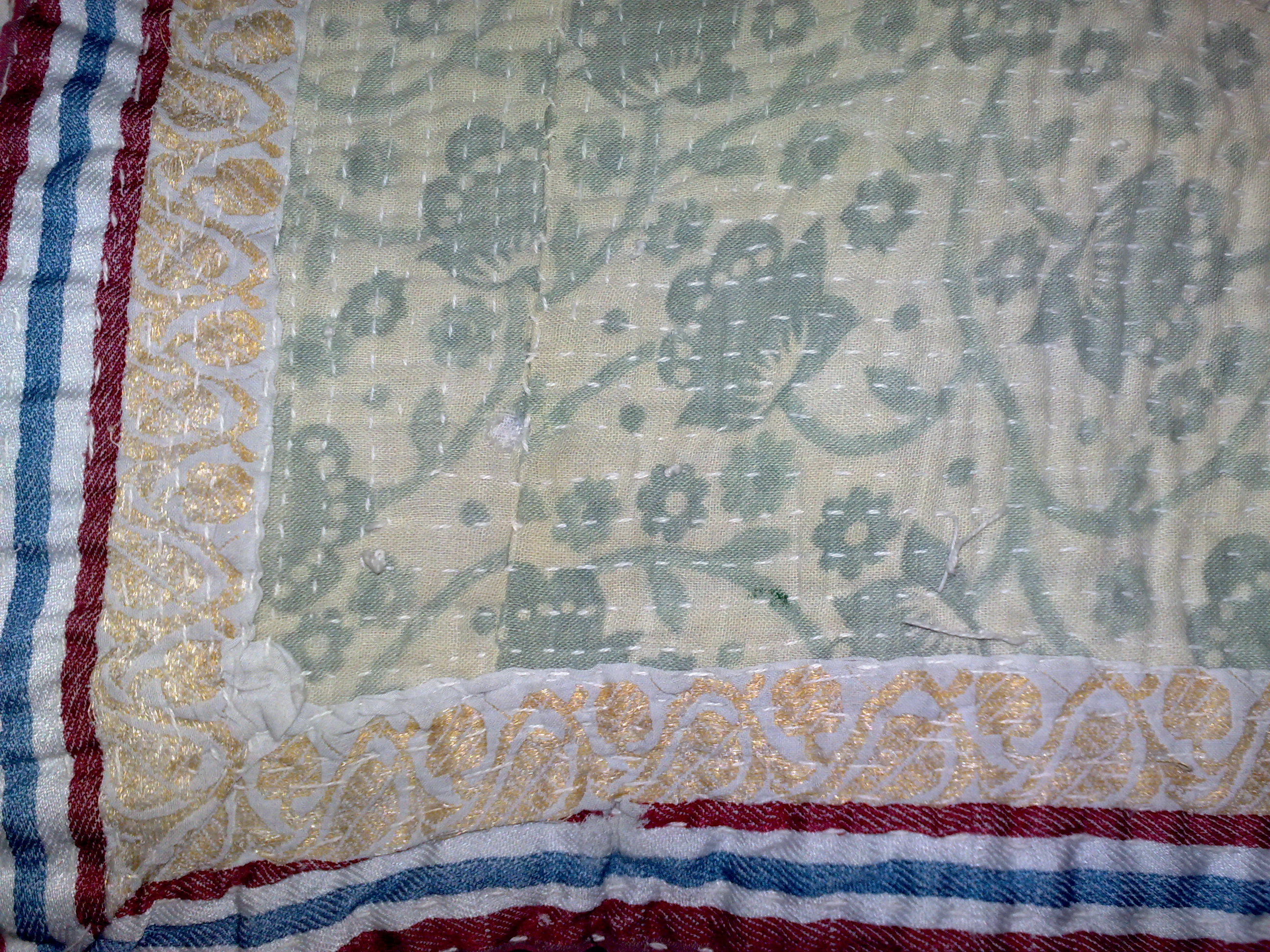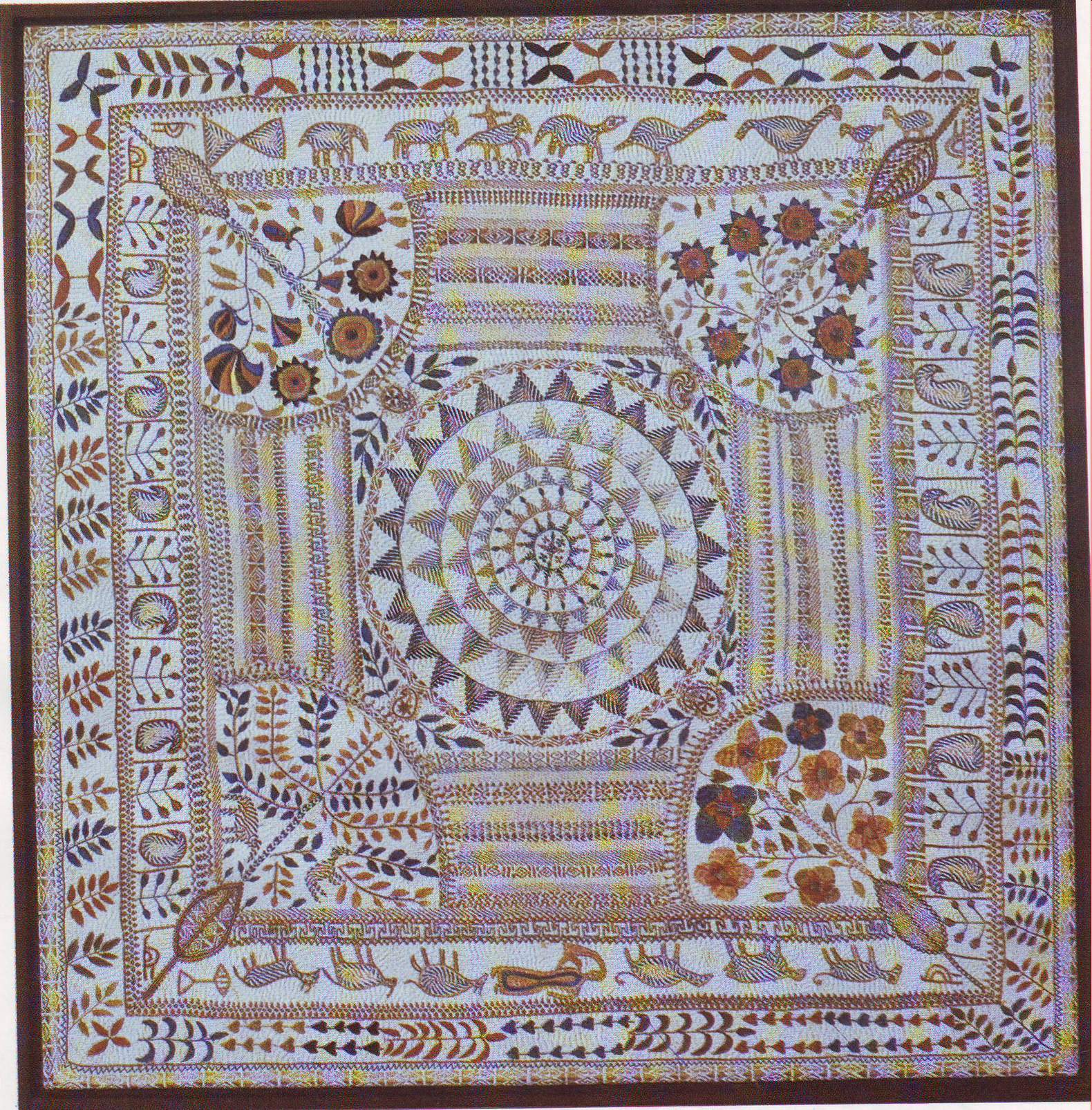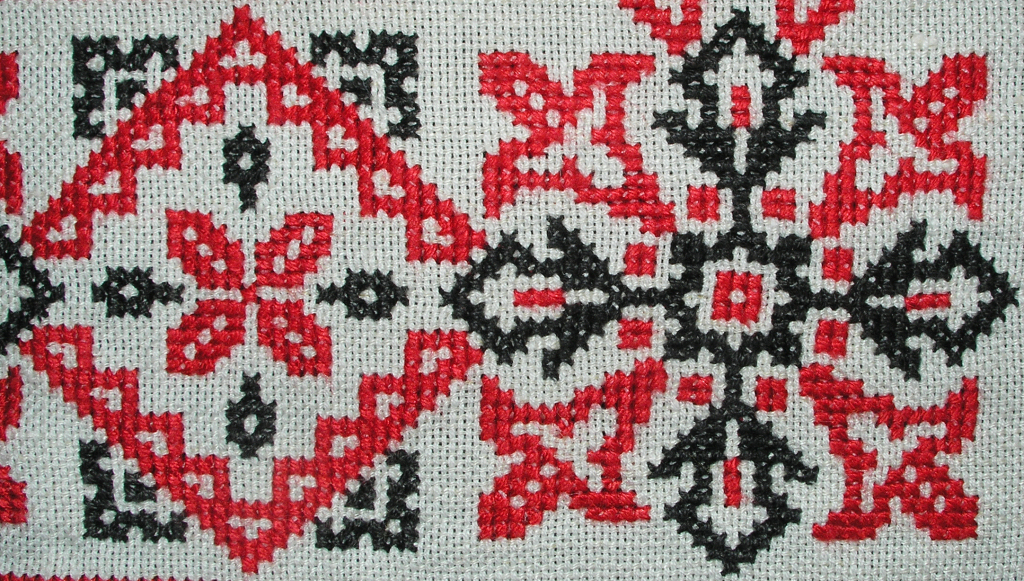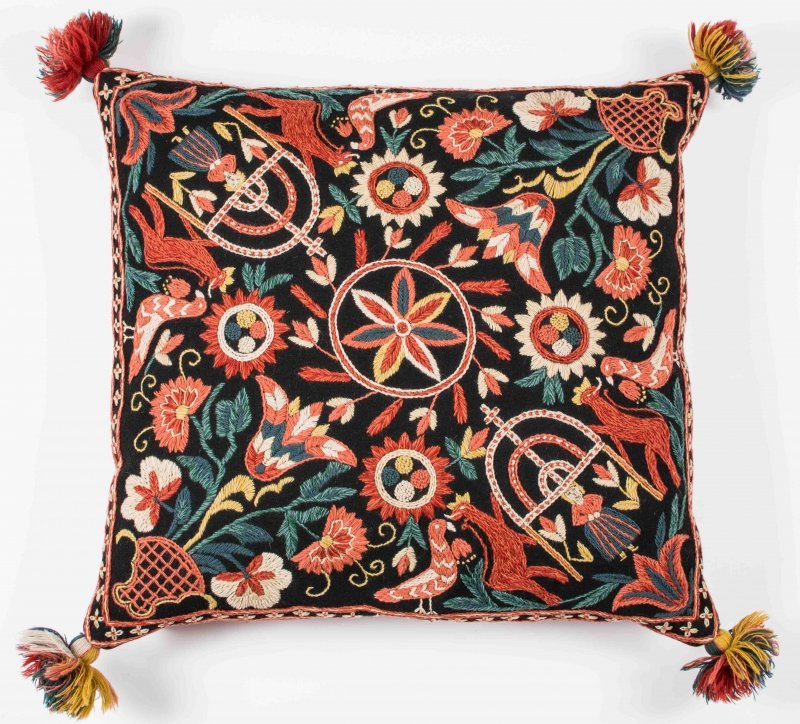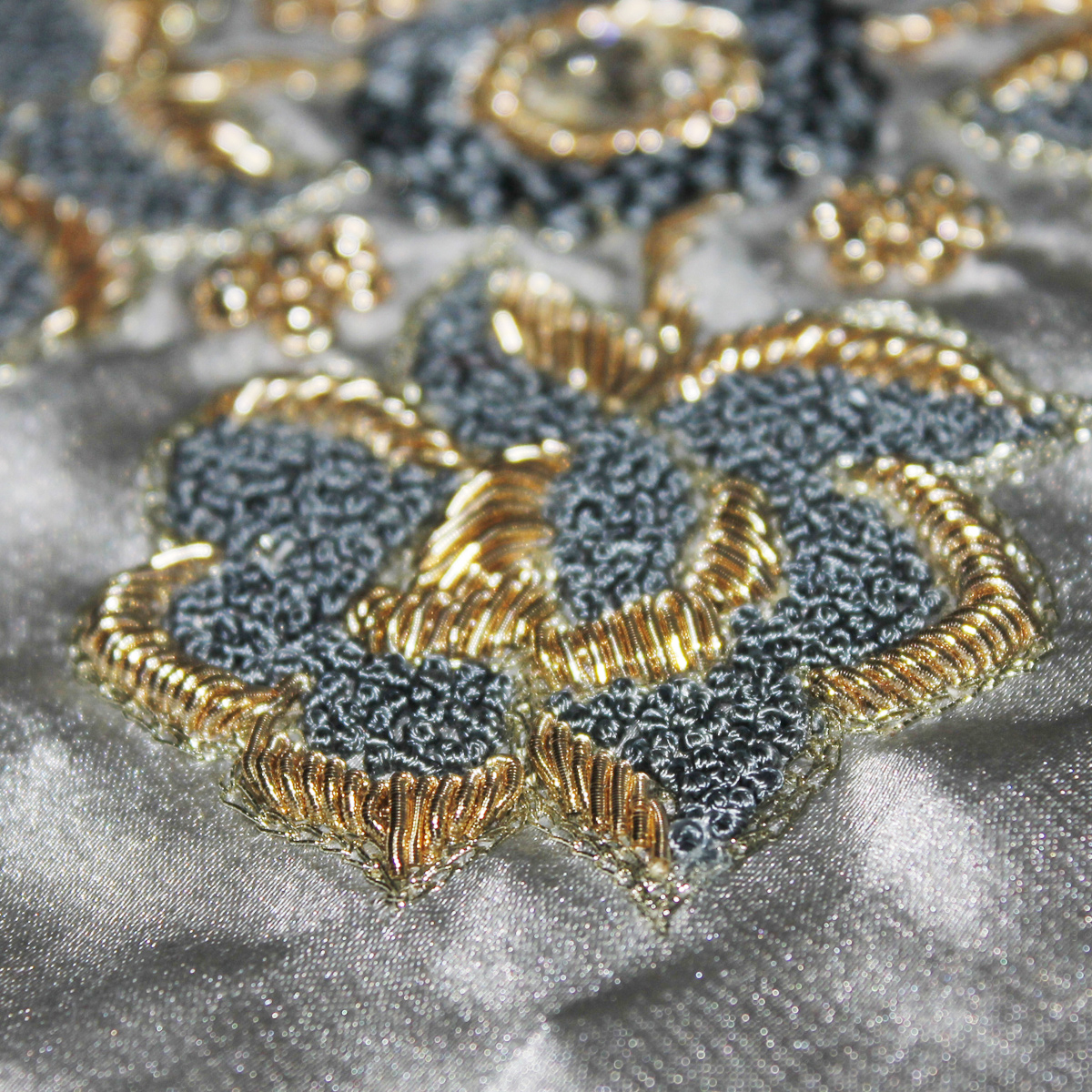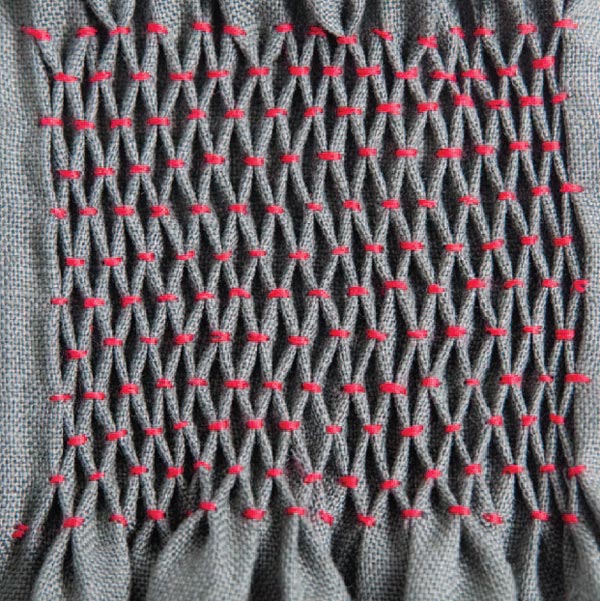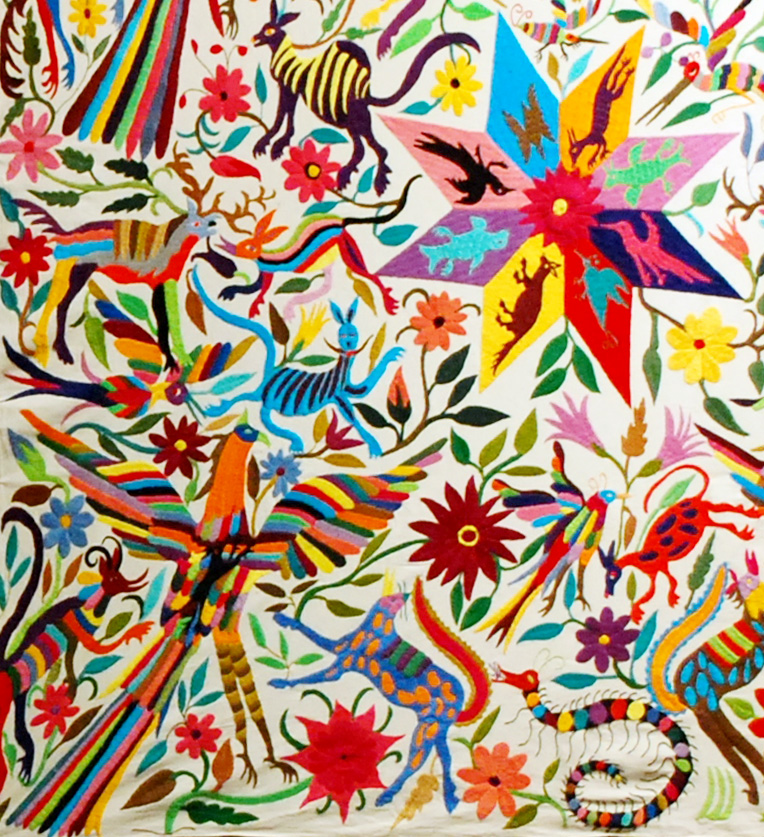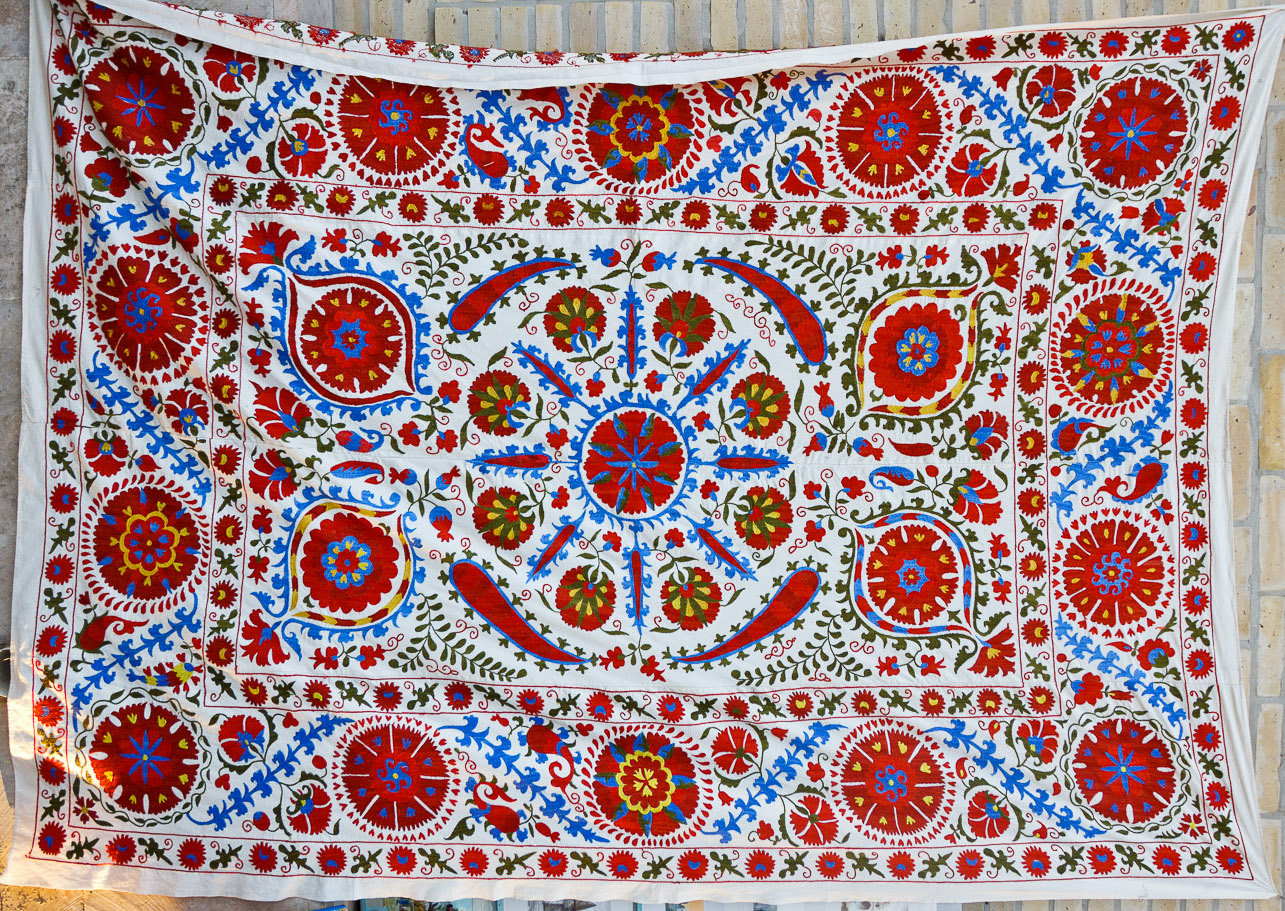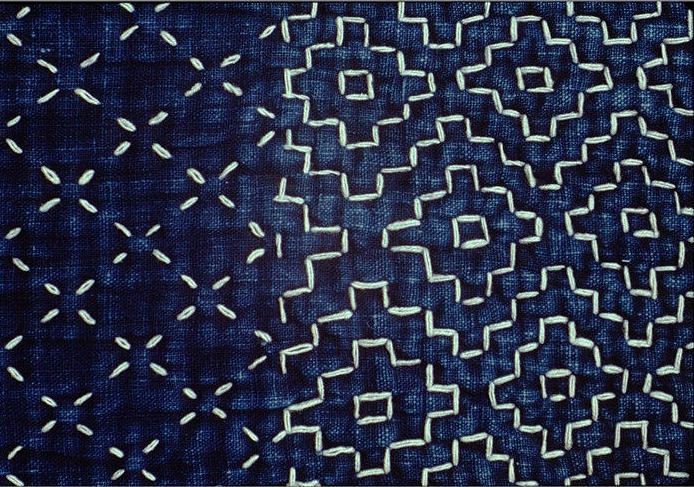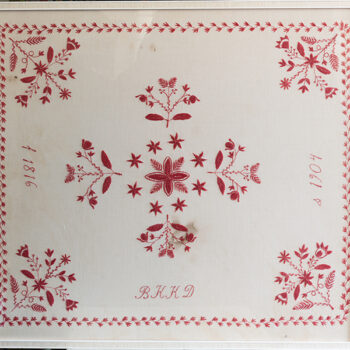
Technique: Embroidery
Embroidery is the craft of decorating fabric or other materials using a needle to apply thread or yarn.
Embroidery may also incorporate other materials such as pearls, beads, quills, and sequins. In modern days, embroidery is usually seen on caps, hats, coats, blankets, dress shirts, denim, dresses, stockings, and golf shirts. Embroidery is available with a wide variety of thread or yarn color.
Some of the basic techniques or stitches of the earliest embroidery are chain stitch, buttonhole or blanket stitch, running stitch, satin stitch, cross stitch. Those stitches remain the fundamental techniques of hand embroidery today.
Explore crafts & makers with Technique: Embroidery
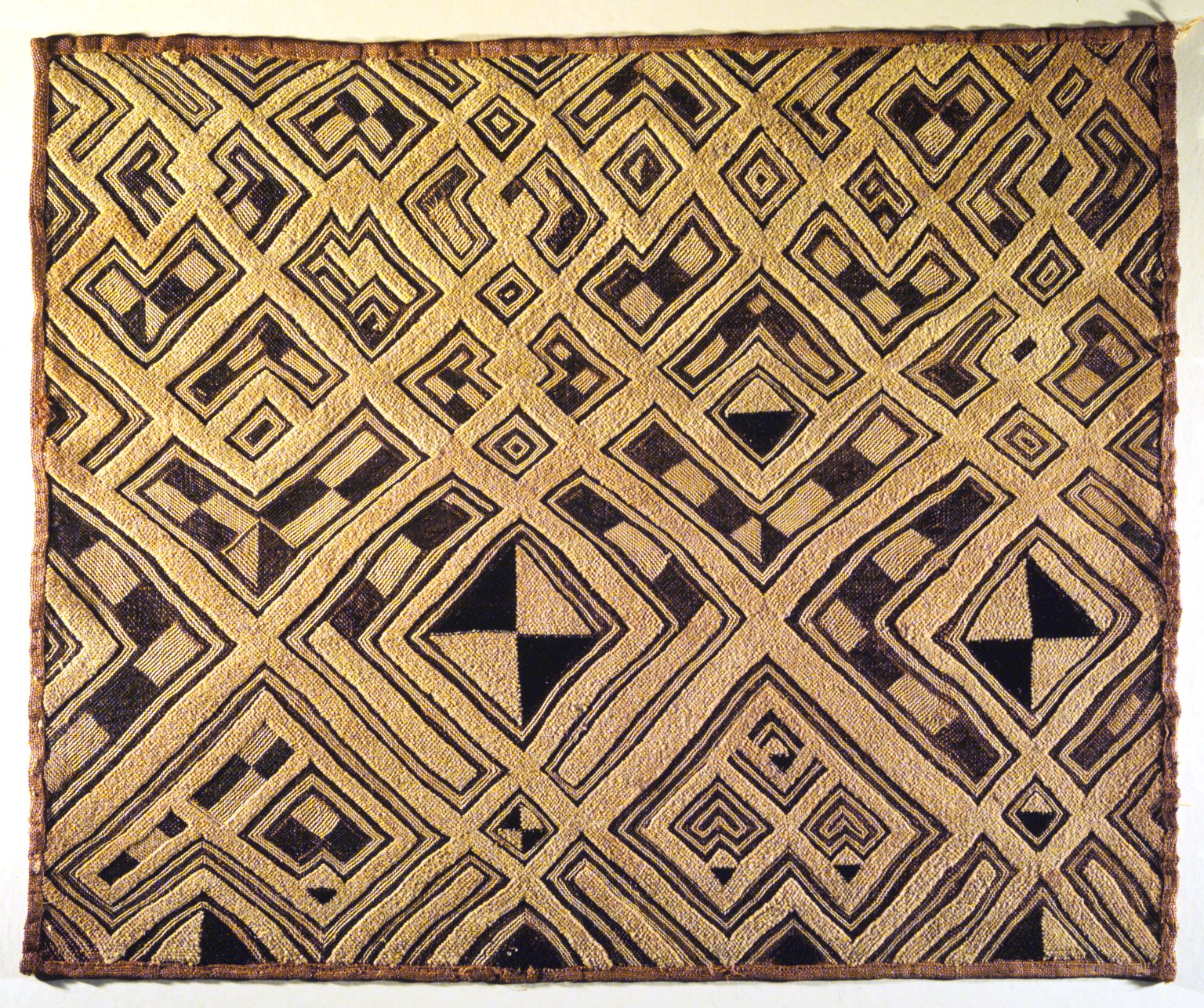
Kuba textiles are elaborate embroidered cloth made of raffia fiber, from the Democratic Republic of the Congo. They are unique in their elaboration and complexity of design and surface decoration. Most textiles are a variation on rectangular or square pieces of woven raffia fiber enhanced by geometric designs executed in linear embroidery in flat-stitch and cut-pile stitching, the latter creating surfaces resembling velvet.
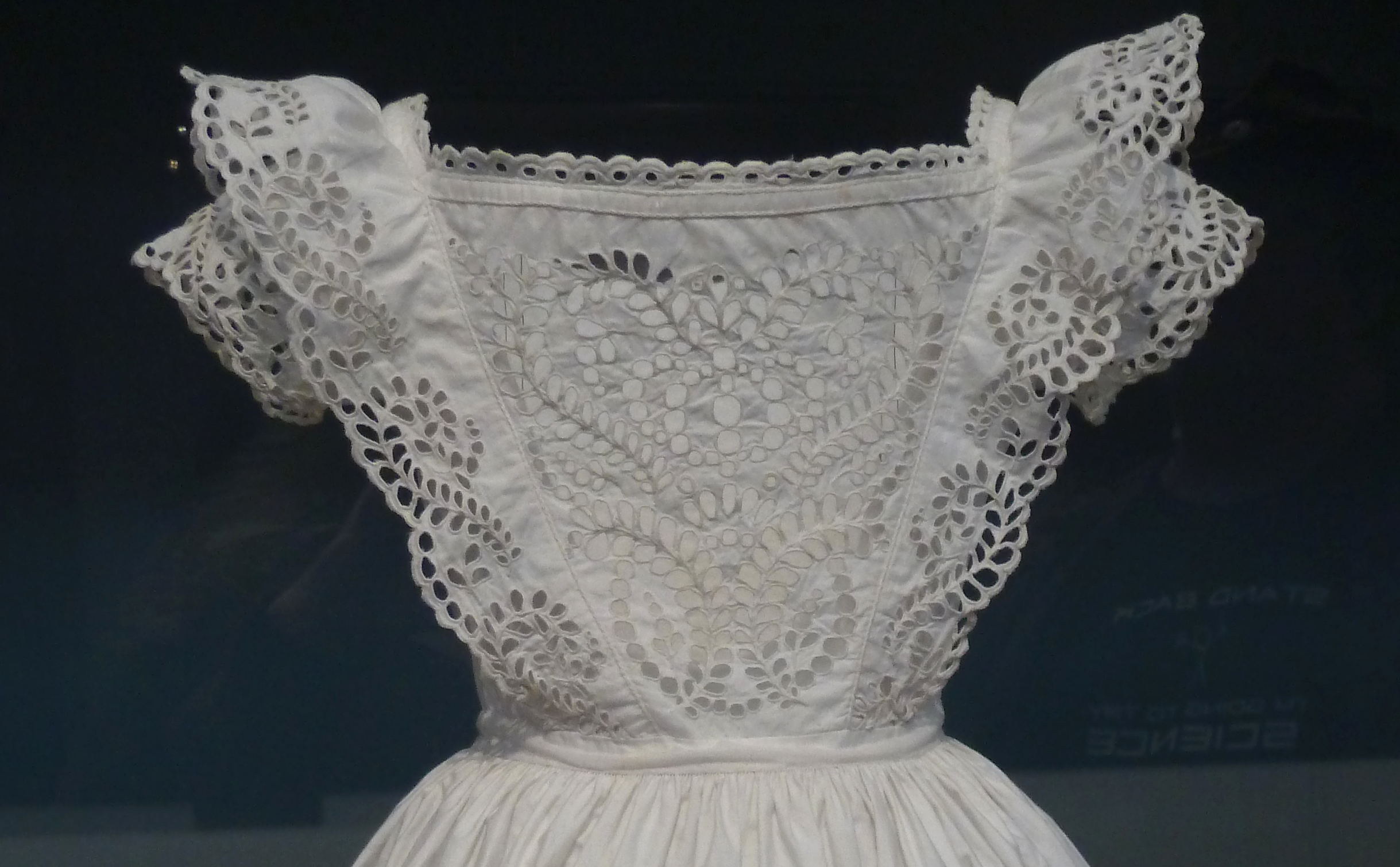
Broderie anglaise is a whitework needlework technique combining features of embroidery, cutwork and needle lace that became associated with England, due to its popularity there in the 19th century. Broderie anglaise is characterized by patterns composed of round or oval holes, called eyelets, which are cut out of the fabric, then bound with overcast or […]
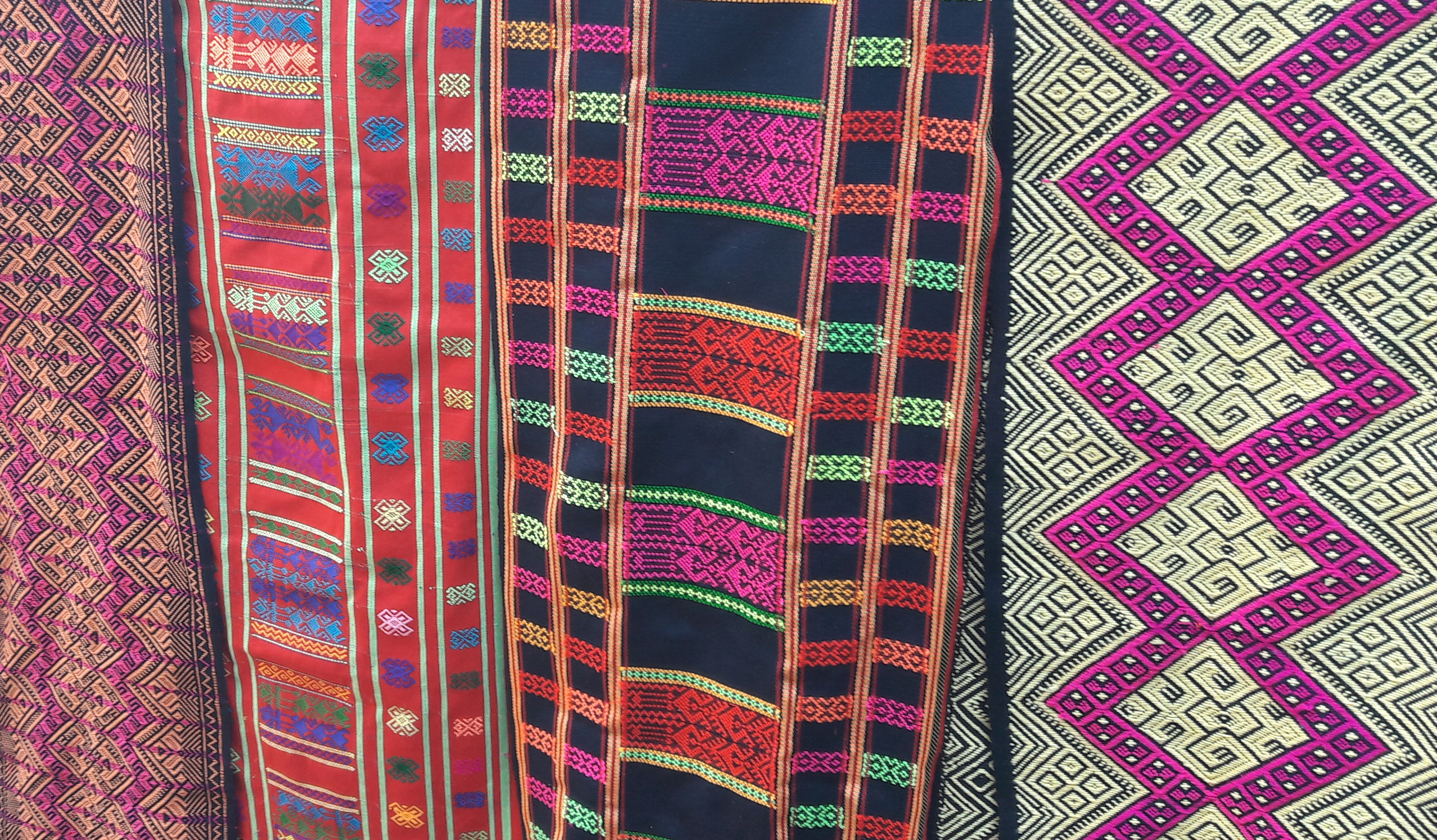
The traditional Li textile techniques by women of the Li ethnic group on the island of Hainan, China, were recognized by Unesco in 2009 as in Need of Urgent Safeguarding on the List of Intangible Cultural Heritage. Spinning, dyeing, weaving and embroidering are employed to make cotton, hemp and other fibres into clothing and other […]
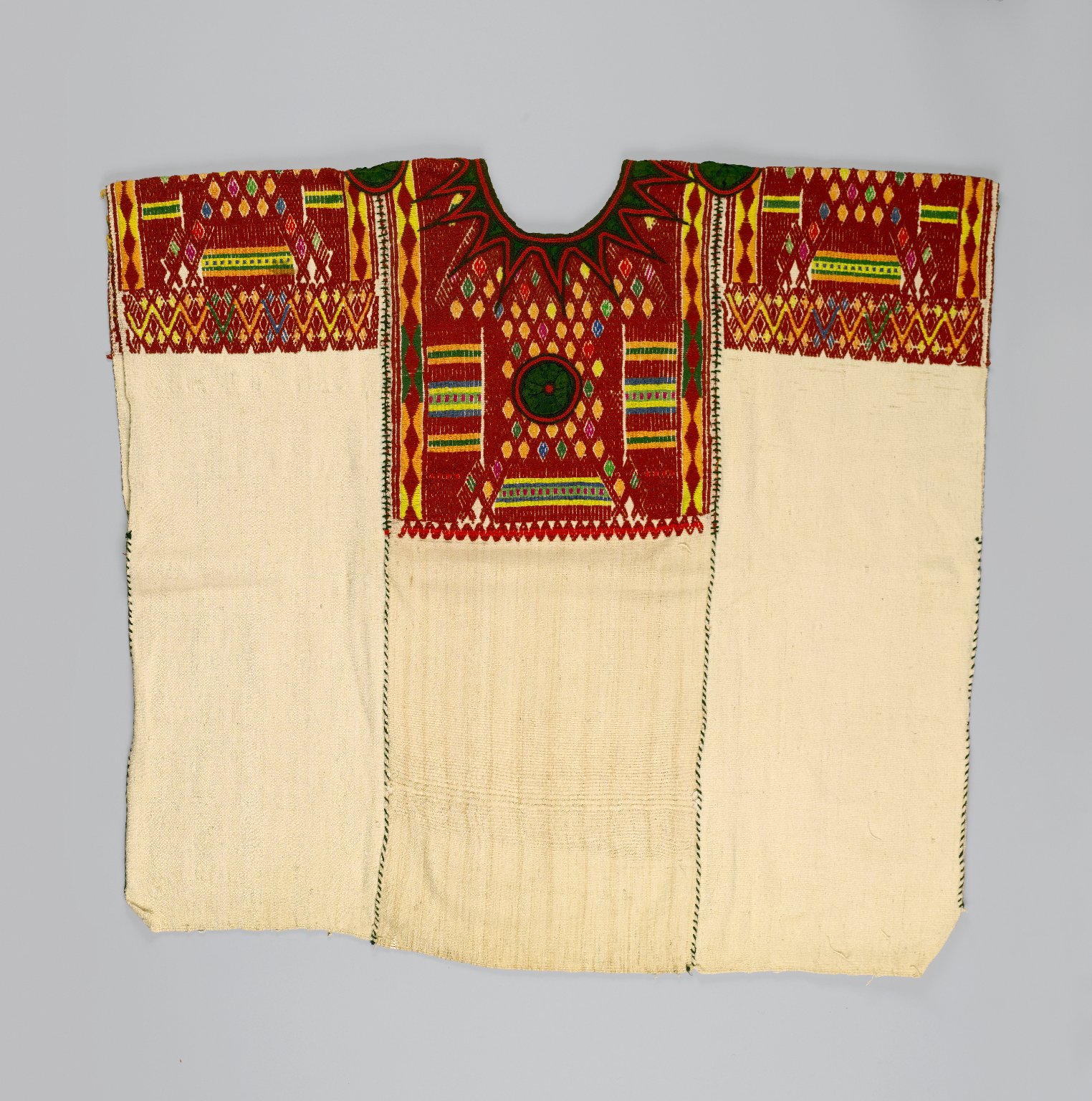
Huipil is the most common traditional garment worn by indigenous women from central Mexico to Central America. It is a loose-fitting tunic, generally made from two or three rectangular pieces of fabric which are then joined together with stitching, ribbons or fabric strips, with an opening for the head and, if the sides are sewn, openings for the arms. […]
Rafoogari is an art of darning in India and neighbouring countries of the subcontinent where this art of healing the cloth is used for emotional and historical reasons too. Though is a social shame associated with wearing restored clothes but this art has been used by highly skilled “rafoogars” to restore some priceless clothes such […]
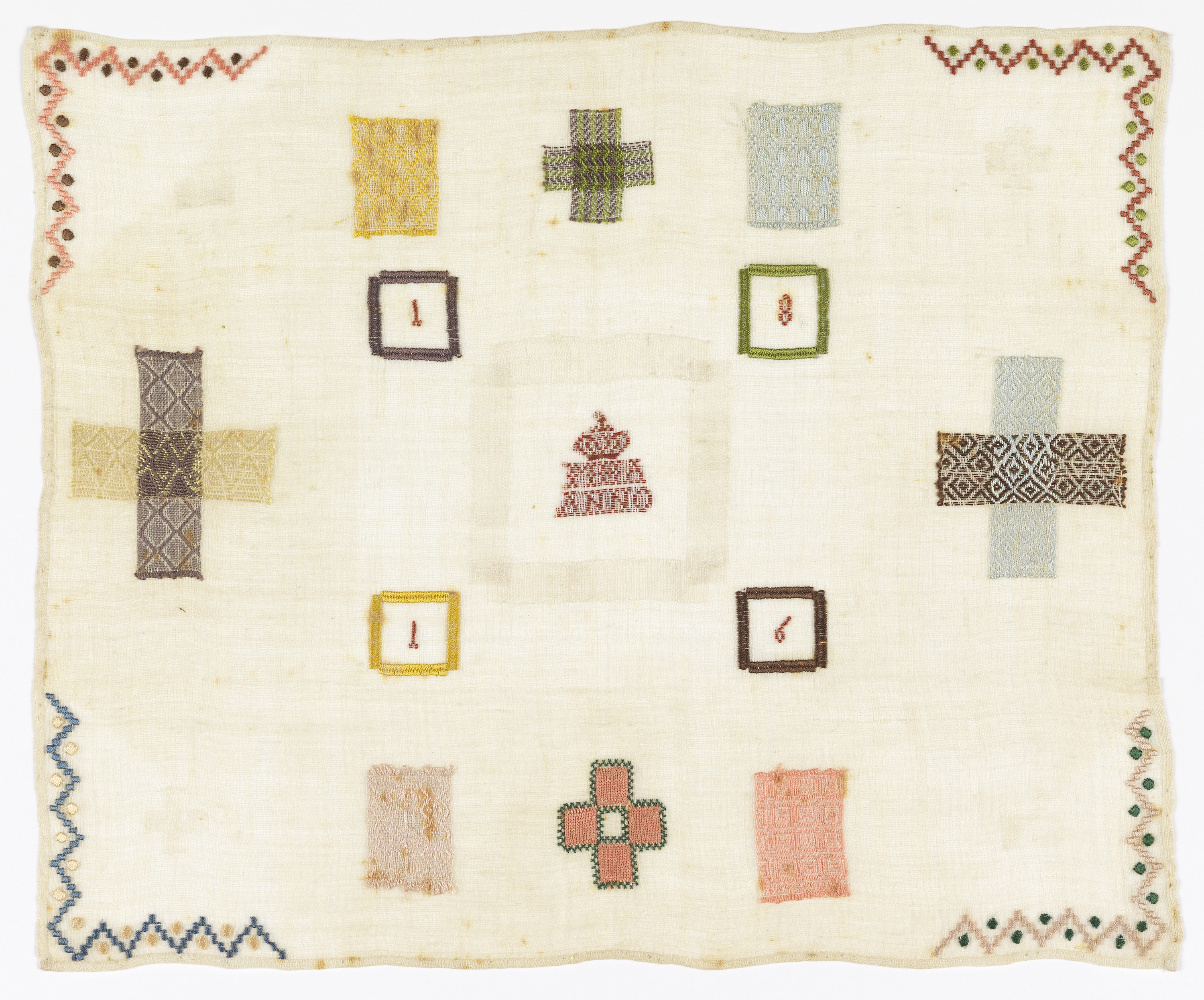
Darning is a sewing technique for repairing holes or worn areas in fabric or knitting using needle and thread alone. It is often done by hand, but it is also possible to darn with a sewing machine. Hand darning employs the darning stitch, a simple running stitch in which the thread is “woven” in rows along the grain of the fabric, with the stitcher reversing direction at the end of each row, […]

